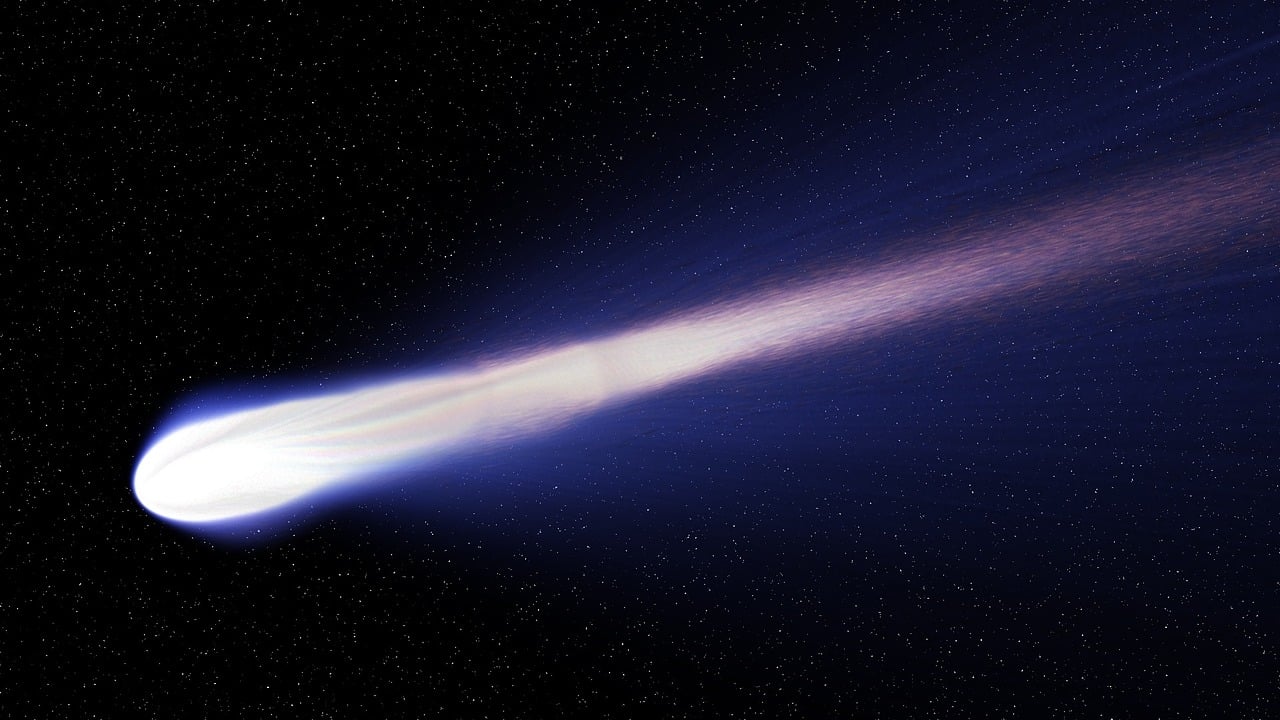1. Past Impacts: Evidence of Catastrophic Events
- The Chicxulub Impact: About 66 million years ago, an asteroid or comet struck Earth near what is now the Yucatán Peninsula in Mexico, creating the Chicxulub crater. This impact is widely believed to have caused the extinction of the dinosaurs and dramatically altered Earth's climate.
- Tunguska Event (1908): A smaller event occurred in Siberia, likely caused by a comet or asteroid exploding in the atmosphere. It flattened over 2,000 square kilometers of forest, showing that even relatively small objects can have significant local effects.
2. Likelihood of a Comet Impact
- Asteroids vs. Comets: While asteroids are more commonly discussed in the context of potential Earth impacts, comets also pose a risk. Comets come from farther out in the solar system (the Kuiper Belt or Oort Cloud) and have highly elliptical orbits, often passing near Earth.
- Comet Characteristics: Unlike asteroids, which tend to orbit in more predictable paths, comets can be harder to track. They move faster and often have less warning before they pass near or collide with Earth. Some comets also have long orbital periods, taking thousands of years to return near Earth.
- Statistical Rarity: Large impacts from comets are much rarer than impacts from asteroids, but they do occur on geological timescales. Estimates suggest that a large comet impact (one that could cause global devastation) happens once every few million years.
3. Potential Consequences of a Large Comet Impact
- Global Effects: A large comet impact could be catastrophic on a global scale. The energy released from such an impact could cause widespread fires, tsunamis, earthquakes, and a “nuclear winter” effect, where dust and debris thrown into the atmosphere block sunlight, causing a dramatic drop in global temperatures.
- Mass Extinctions: A comet strike similar to the one believed to have wiped out the dinosaurs could lead to mass extinctions, as the environmental changes would make it difficult for many species to survive.
- Climate Disruption: An impact could drastically alter Earth’s climate, potentially leading to the collapse of ecosystems, disruption of agriculture, and widespread famine.
4. Monitoring and Detection: How We Track Potential Threats
- Near-Earth Object (NEO) Programs: NASA, along with other space agencies, has programs specifically designed to monitor and detect potentially hazardous asteroids and comets. These include the Near-Earth Object Observations Program and systems like Pan-STARRS and NEOWISE that scan the skies for NEOs.
- Early Detection: Detecting a comet early is crucial. While many asteroids are relatively easy to monitor, comets pose more of a challenge because of their unpredictable orbits and long periods of invisibility before they come close to the Sun and Earth.
- Planetary Defense: To mitigate the threat, space agencies are working on potential deflection or disruption strategies. NASA’s recent DART mission (Double Asteroid Redirection Test) successfully tested the ability to alter the trajectory of a small asteroid, proving that we can potentially deflect a dangerous object in the future.
5. What’s Being Done to Prevent a Disaster?
- Planetary Defense Initiatives: NASA, ESA, and other organizations are investing in planetary defense strategies, such as monitoring, tracking, and potentially redirecting threatening objects.
- Deflection Techniques: Concepts include using spacecraft to change the object's trajectory, deploying nuclear devices to disrupt it, or even using lasers or kinetic impactors to nudge it off course.
- DART Mission: As mentioned earlier, the successful DART mission in 2022 showed that it’s possible to change the path of a celestial object through a controlled impact.
- International Cooperation: Mitigating the threat of a comet or asteroid impact is a global effort. International bodies like the United Nations Office for Outer Space Affairs (UNOOSA) coordinate efforts across countries to share data, plan responses, and develop strategies to deal with potential impact threats.
6. Uncertainty in Predictions
- Long-term Threats: The greatest challenge in dealing with comet impacts is the uncertainty in predicting when and where one might strike. Comets on long-period orbits may only appear once every several thousand years, meaning their approach could go undetected until they’re relatively close.
- Potentially Hazardous Comets (PHCs): While asteroid tracking is well-advanced, tracking potentially hazardous comets is still an area where more investment is needed. Comets from the Oort Cloud, for example, could appear with little warning, and their long orbits make it harder to predict their paths far in advance.
7. What If a Comet Were to Strike?
- Warning Time: If a large comet were detected heading toward Earth, the warning time would depend on how far away it was when detected. With enough notice (years or decades), there could be efforts to deflect or destroy the object. However, if the warning time were short (days to months), there might be little time for preventive action.
- Impact Preparedness: Governments and scientists would need to prepare for the worst-case scenario, including evacuations, sheltering strategies, and potential plans for surviving the environmental effects (like global cooling or tsunamis).
Conclusion
While the idea of a huge comet striking Earth is terrifying, such an event is extremely rare on human timescales. Nonetheless, the risk is real, and scientists are actively monitoring the skies and developing strategies to detect and mitigate potential threats. The key takeaway is that the likelihood of a comet impact is very low, but preparedness and early detection are critical for planetary defense.


